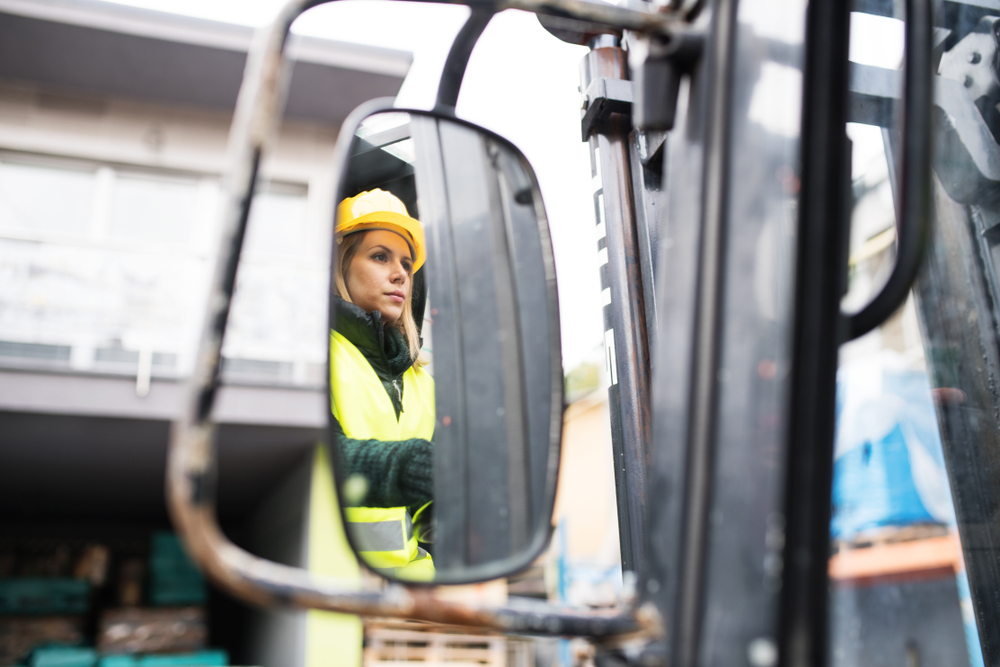What You Should Know About Forklift Mirrors
 Mirrors come standard on most vehicles. In fact, one of the first things a motorist is taught to do when getting in the car is to check and adjust their mirrors. While you might expect forklift mirrors to come standard, not every model includes this safety feature. By delving into forklift mirror requirements, operators can come to a better understanding of when to use them and when to physically turn around to check blind spots.
Mirrors come standard on most vehicles. In fact, one of the first things a motorist is taught to do when getting in the car is to check and adjust their mirrors. While you might expect forklift mirrors to come standard, not every model includes this safety feature. By delving into forklift mirror requirements, operators can come to a better understanding of when to use them and when to physically turn around to check blind spots.
What are Forklift Mirrors?
Just like in passenger vehicles, forklift mirrors are safety features installed to provide operators with a view of what’s behind or to the side of their lift. Mirrors make it easy to see upwards of 150 degrees behind the truck. While you might expect forklift mirrors to come standard on all lift trucks, there is some variance across makes and models. Though useful for small and mid-size lift trucks, mirrors can actually encourage drivers of larger models to forgo checking their blind spots. For this reason, many large forklifts don’t include mirrors as a standard feature. Of course, equipment owners can always opt to add on forklift mirrors if they so choose.
Are Forklift Mirrors Required by OSHA?
Many people assume that forklift mirror requirements must be mandated by OSHA, the Occupational Safety and Health Administration. In reality, there is no such requirement. OSHA requires lift operators to look in the direction of travel, but has little to say about mirrors themselves. Forklift mirrors OSHA rules aside, mirrors are becoming more standard across the industry. If your model contains a mirror, it’s best to keep it in place in lieu of removal. Instead, make it a point to remind operators of the importance of both checking the mirrors and looking behind them when backing up.
Types of Forklift Mirrors
There are two main types of forklift mirrors: rectangular and round. Rectangular mirrors act the same way they do in cars. They are typically attached to the main frame of the forklift and allow operators to check what’s happening behind their truck. Round mirrors, on the other hand, can fit on the sides of the lift, giving the operator a wide-angle view. These mirrors are great for eliminating blind spots. Either type can be easily installed.
While there may not be any formal forklift mirror requirements set by OSHA, it’s important to keep a few things in mind as you shop around. Size is one factor. Narrow profile mirrors are best for smaller trucks working in confined spaces, while wide view mirrors are preferable for larger lifts working in open areas. Price is another consideration. While the most basic of forklift mirrors start in the $40 to $50 range, you can find yourself spending hundreds of dollars on high end options.
The Importance of Certification
Forklift mirror safety best practices don’t come naturally. Most operators are used to driving cars, trucks, and SUVs, which rely on mirrors in a far different way. To ensure your employees are following industry standards, it’s important they’re adequately trained and certified. That’s not just a recommendation – it’s the law. OSHA requires all forklift operators to be fully trained and certified before they begin work. It is the responsibility of the employer to provide such training. Failure to comply with these regulations could lead to expensive fines and penalties.
If you’re eager to educate your lift operators on the best uses of forklift mirrors and other safety features, consider partnering with ForkliftCertification.com. We offer convenient, affordable training opportunities for lift operators of all backgrounds and experience levels. Click here to learn more about our offerings or to sign up. Have questions about FLC’s training opportunities? Feel free to reach out to our team online or by phone at 888-278-8896.
